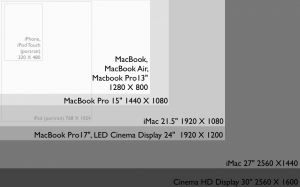Facebook is a trap. I walked right into it and now I can feel the vise-like grip of it like a digital bear-trap snapped tight around my ankle.
I never intended to join Facebook. Social networking didn’t interest me at first. I don’t think of myself as a very social person and the notion of connecting to long-lost friends and relations wasn’t that appealing. After all, if I wanted to be in touch with those folks, why did I stop talking to them in the first place?
A few years ago I was working on a contract job. The company was involved in producing an interesting preferences engine, a system to help you discover media you might liked based on things that people like you also like. Facebook was a target platform for the companies products and they were working in integrating with it. And the work the I was doing at the time dovetailed into the Facebook integration work. And to be a Facebook developer, you have to be a Facebook member. And so I signed up, never intending to use it for anything more than getting my job done. But the trap was now set and armed.
I left that contract a few weeks later and moved on to other things. I pretty much forgot about my Facebook account.no logging in, no connecting, nothing. But the trap was still laying in my path, taut springs ready to snap the jaws shut on a misplaced limb.
I don’t really remember why I picked up Facebook again. I have a vague recollection of some one asking me if they could connect to me that way and responding in the affirmative. The details from there are hazier than a Haight-Ashbury head shop. But somewhere in there, I stepped on the trap and SNAP! I was caught.
Over the next year or so, I began to use Facebook a bit more. I tied it to my Flickr account, set up Twitter to feed my status and even connected this blog to it. All in the name of sharing more with my growing “social graph”. And I’ll admit, I started to see some value in the connections. Even with my antisocial tendencies it has been nice to hear from friends and colleagues from the mists of time and places long forgotten.
I never had any illusions about the privacy implications of exposing parts of my life on the Web. I’m fully aware that what I choose to share is immediately added to the ever-growing information doppelgänger being constructed in the dark corners of corporate databases across the Internet. And I’m aware that the creators of this other me—this homunculus made not of my flesh but of my digital life—are busy gathering even more information, things that I’m not even consciously aware of having shared and binding that to into their creation.
So I’m not naive about the implications of participating in the Facebook’s of the world; I am aware of the price and many times I have been willing to pay it. Gladly.
But the cost of being a member of the Facebook community is now too high. It has become painfully obvious that the primary goal of Facebook crew to do whatever they see fit with the information in their system, regardless of the desires of the owners of that information. I won’t hash out all the problems with Facebook’s stance on privacy; Jason Calacanis does great job of that is his latest email. However, any illusion or lingering naivety I may have had has been stripped away and all that left is a clear view of the trap.
But I think I can escape from the trap. I don’t have to play Mark Zuckerberg’s game and I don’t have to keep feeding Facebook. It a sad truth that I’ll never be able to kill my Facebook doppelgänger entirely. They’ve already got information about me that it’s clear I won’t eve be able to erase. But I don’t have to keep letting them have my information.
So I’m disconnecting myself from Facebook. I’ve already pulled a few of the connections to other source. And As soon I finish taking the thing I want and getting rid of as much as I can, i’m going to deactivate my account and throw away the password.
I’m going to get out of this trap, even if it means cutting off a part of myself to get free.
